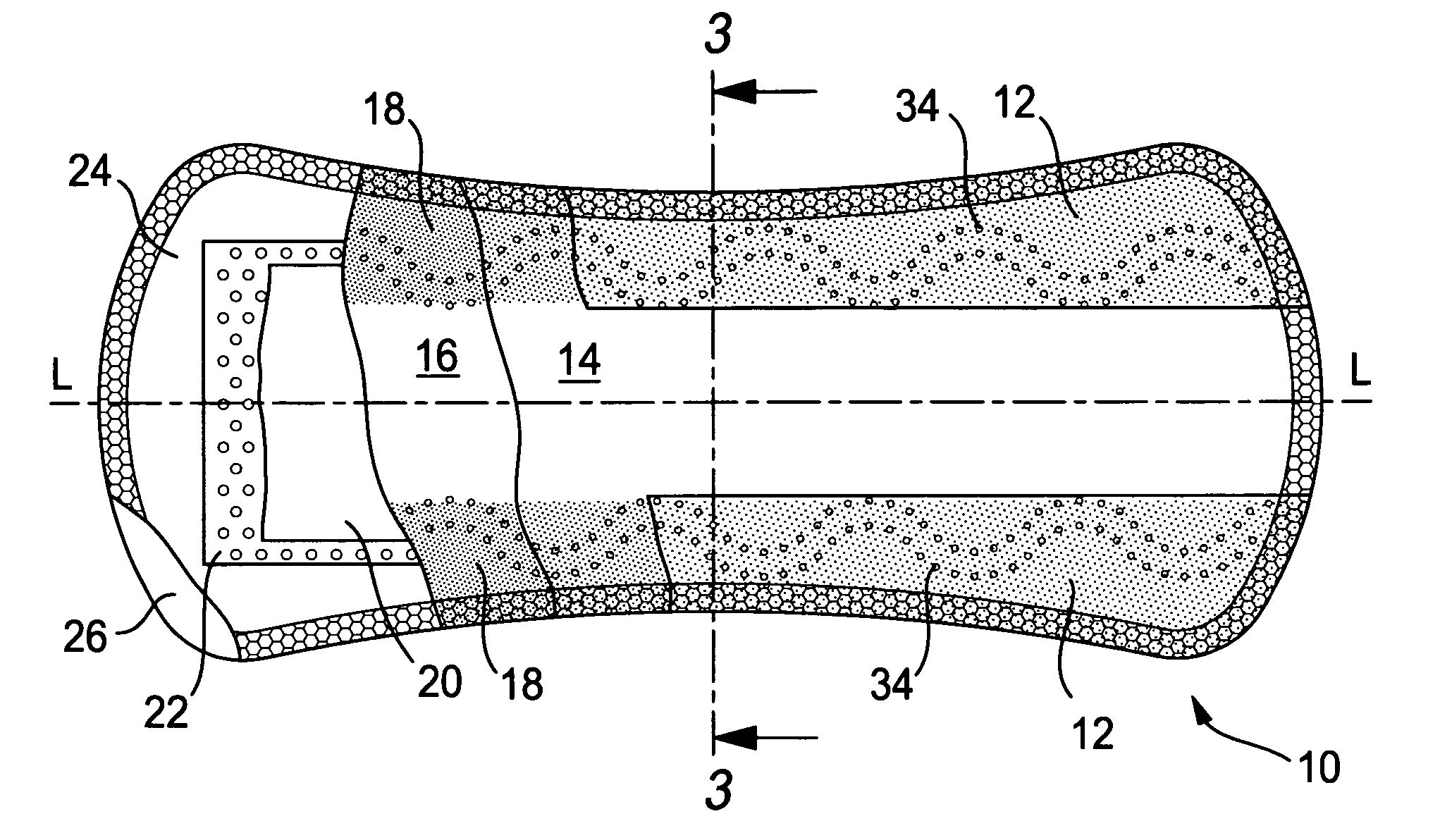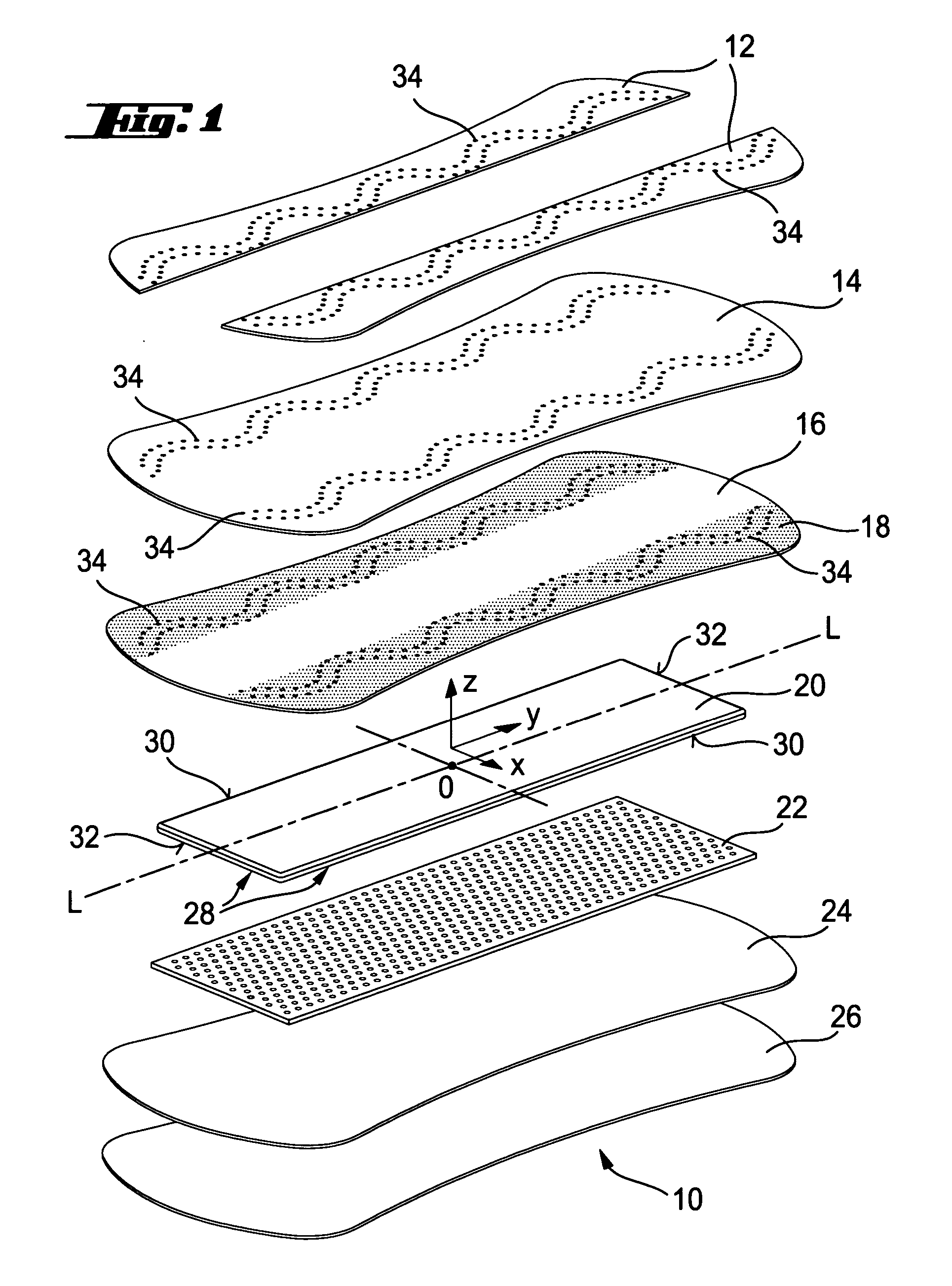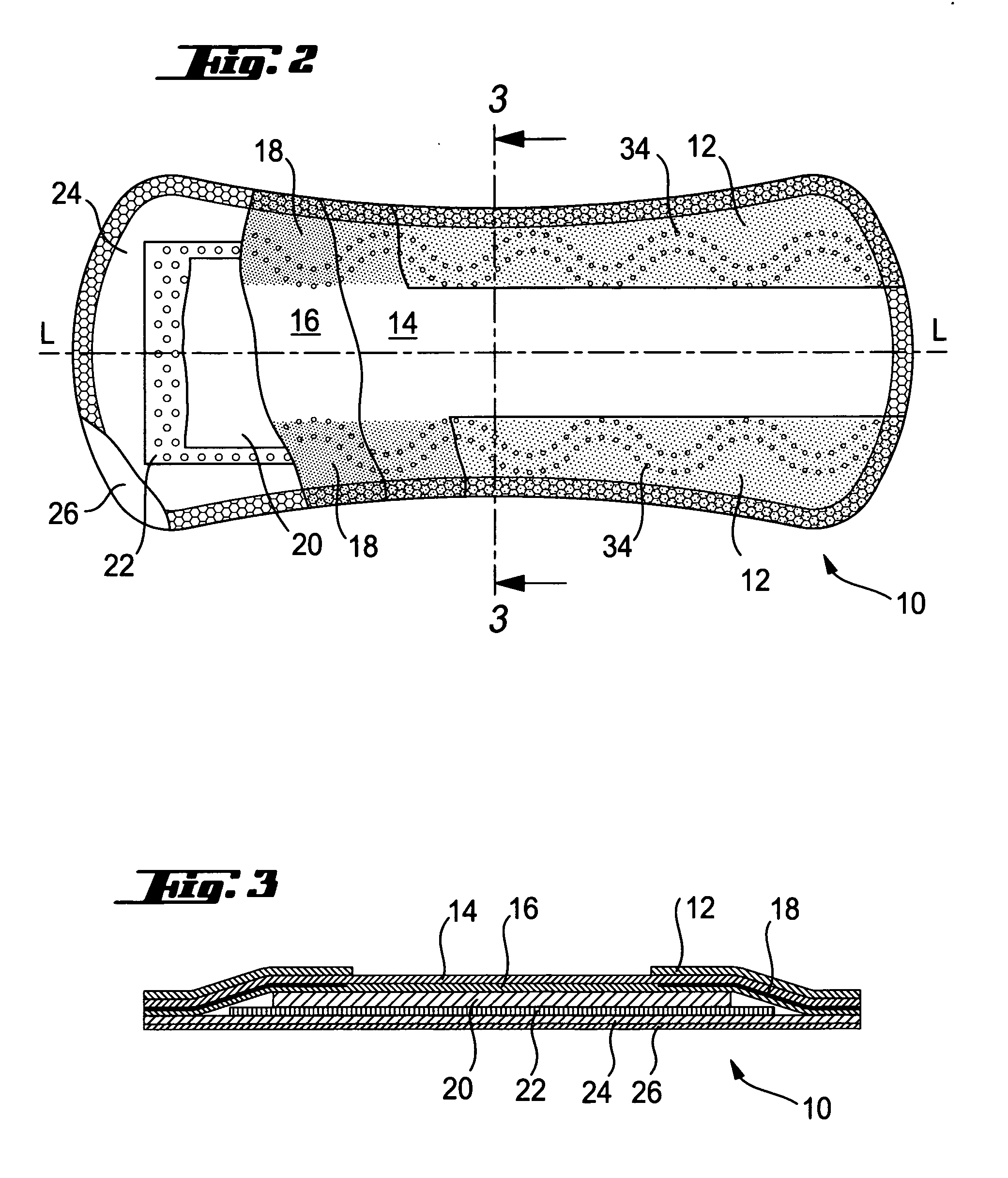Sanitary article including ink used to increase the hydrophobicity of an area of the article
a technology of sanitary articles and inks, applied in the field of absorbent sanitary articles, can solve the problems of preventing the leakage itself, re-wetting of the topsheet of the article by fluids, and leaking of previously absorbed fluid through the lateral sides of the article, and achieve the effect of increasing the hydrophobicity of the area
- Summary
- Abstract
- Description
- Claims
- Application Information
AI Technical Summary
Benefits of technology
Problems solved by technology
Method used
Image
Examples
Embodiment Construction
[0025] As used herein, the term “absorbent sanitary articles” refers to devices that absorb and contain liquid, and more specifically, refers to devices that are placed against or in proximity to the body of the wearer to absorb and contain the various exudates discharged from the body.
[0026] As used herein, the term “feminine hygiene article” refers to disposable absorbent articles to be worn by women for menstrual and / or light incontinence control such as sanitary napkins. Feminine hygiene articles are typically held in place adjacent the user's externally-visible genitalia (i.e., the pubic region) by the user's undergarment. Feminine hygiene articles can be placed into the user's undergarment and affixed via adhesive or other joining means.
[0027] Referring now to FIG. 1, a feminine hygiene article 10 is depicted in an exploded view comprising, from top to bottom, the following layers: two lateral topsheet stripes 12, a topsheet 14, a secondary topsheet 16 on which two stripes o...
PUM
 Login to View More
Login to View More Abstract
Description
Claims
Application Information
 Login to View More
Login to View More - Generate Ideas
- Intellectual Property
- Life Sciences
- Materials
- Tech Scout
- Unparalleled Data Quality
- Higher Quality Content
- 60% Fewer Hallucinations
Browse by: Latest US Patents, China's latest patents, Technical Efficacy Thesaurus, Application Domain, Technology Topic, Popular Technical Reports.
© 2025 PatSnap. All rights reserved.Legal|Privacy policy|Modern Slavery Act Transparency Statement|Sitemap|About US| Contact US: help@patsnap.com



